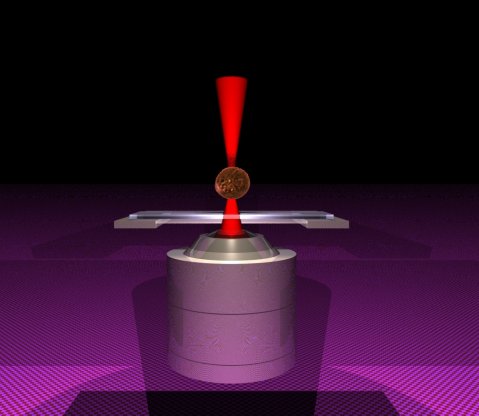Early cervical cancer detection

Researchers at the University of St Andrews have developed a new technology that could enhance early detection of cancer and potentially save lives.
Professors Simon Herrington and Andrew Riches of the Bute Medical School and Professor Kishan Dholakia of the School of Physics and Astronomy have demonstrated that cancerous cervical cells can be detected at an early stage by using the new approach.
The research is published in the latest edition of the International Journal of Cancer. They use a technique called Raman spectroscopy to detect precancerous cells, which could eliminate much of the labour-intensive work required for a conventional smear test.
Professor Herrington said, “This is a very promising approach to the identification of cancer cells and is applicable not only to cervical cancer but also to cancers in other sites, for example the lung and the bladder.”
The collaboration utilises the expertise from members of the University’s Bute Medical School alongside the novel advanced optical laser apparatus developed by Professor Kishan Dholakia of the School of Physics & Astronomy.
Professor Dholakia explained, “A light beam is shone on the cells or tissue and the light will scatter differently from the cancerous cells. The difference is very subtle and relates to the molecular bonds within the cells: importantly, it is a non-invasive method using lasers which means there is no damage.”
The approach should be fully compatible with current cervical screening programmes and would therefore only require procedural changes in the laboratory.
Professor Dholakia continued, “This should detect cancer at an earlier stage and will act as a complementary technique to standard pathology. The scattered light technique is an efficient means of providing confirmation.
“The Schools plan to develop this technique together so that it can eventually be used for tissue. We are aiming to get this in to hospitals in the next 5 to 10 years which would be a major development for the University of St Andrews.”
Funding for the project has been granted from a variety of sources including the Medical Research Council and the UK Engineering and Physical Sciences Research Council.
Cancer Research UK states that cervical cancer is the second most common cancer in women under 35 years old.
The paper will appear in the 15th December issue of the International Journal of Cancer and is available at http://www3.interscience.wiley.com/cgibin/abstract/115807669/ABSTRACT
NOTE TO EDITORS:
The researchers are available for interview:
Professor Simon Herrington on 01334 463618 or email [email protected]
Professor Kishan Dholakia on 01334 463184 or email [email protected]
Issued by the Press Office, University of St Andrews
Contact Fiona Armstrong, Press Officer on 01334 462530 / 462529, email [email protected]
Ref: Cervical Cancer 06/12/07
View the latest University press releases at www.st-andrews.ac.uk
Category Research